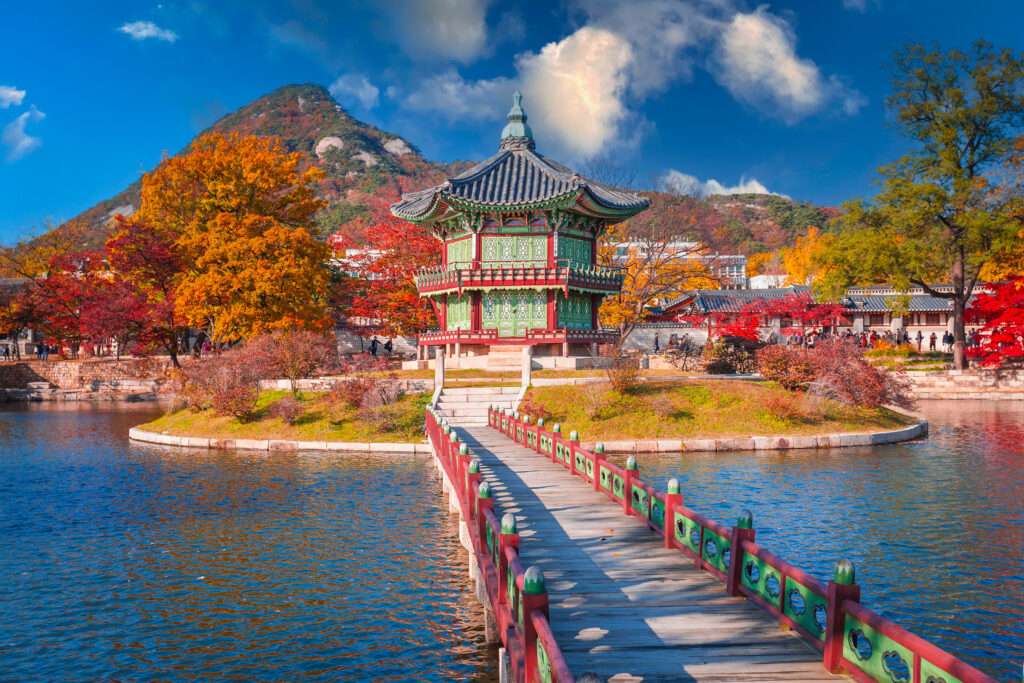
A stay in South Korea, one of our 17 trendiest destinations in the world to visit in 2024, will appeal to culture buffs, sports enthusiasts and shoppers alike. Seoul, a gigantic metropolis and a veritable rendezvous with modernity, offers a striking contrast with magnificent natural landscapes, such as the famous Seoraksan National Park, and unspoilt villages where time sometimes seems to have stood still in the "Land of the Morning Calm", cradle of Buddhism. The most remote rural regions, easily accessible thanks to Korea's highly-developed transport network, offer an immersion in traditional, ancestral Korea, with its temples and Buddhist monasteries, such as the Haeinsa temple. Combined with refined cuisine and a multitude of sporting activities, a Korean trip is unforgettable.
1. Seoul
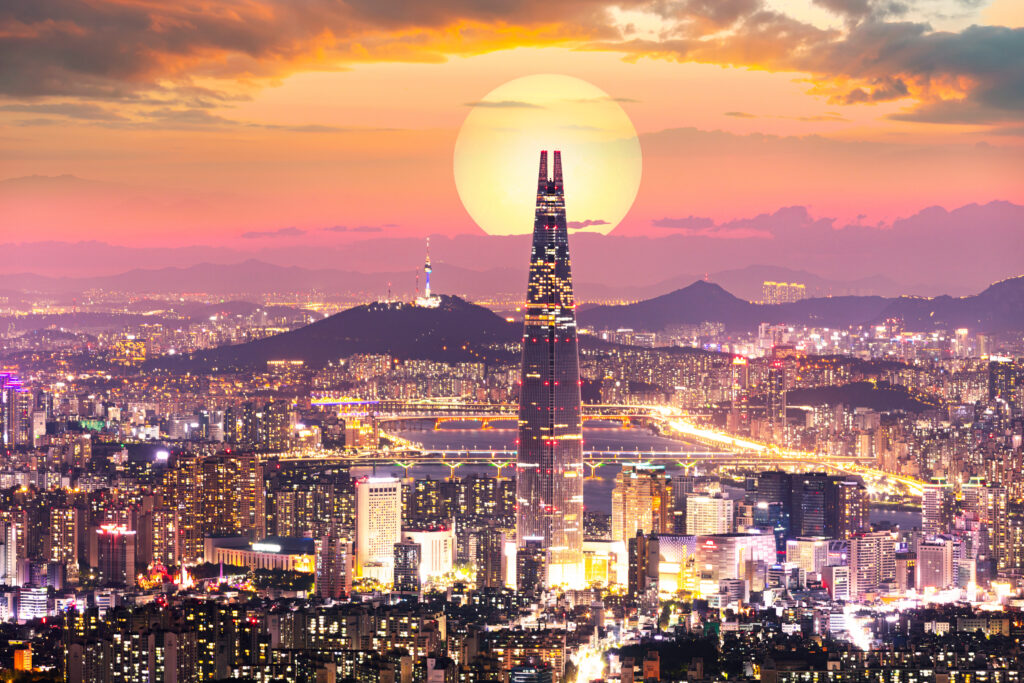
Seoul, the fascinating and dynamic capital, is a city rich in history, with a multitude of sites of exceptional quality bearing witness to its glorious past. And many of these sites are UNESCO World Heritage Sites. But there's much more to the Korean city, which also hosts the Lantern Festival - one of Asia's top 10 events. It is also a shopping capital of the world, where the stores seem to be open non-stop and the strolls through its vast markets seem endless. Despite its urban density, Seoul also offers many green spaces and national parks accessible by subway, close to the more urban districts. With a plethora of restaurants, lively student districts, huge business centers and preserved traditional neighborhoods, Seoul - here are our top 17 must-see places- presents a multitude of facets and remains a real joy to discover.
2. What to do in South Korea Visit Busan
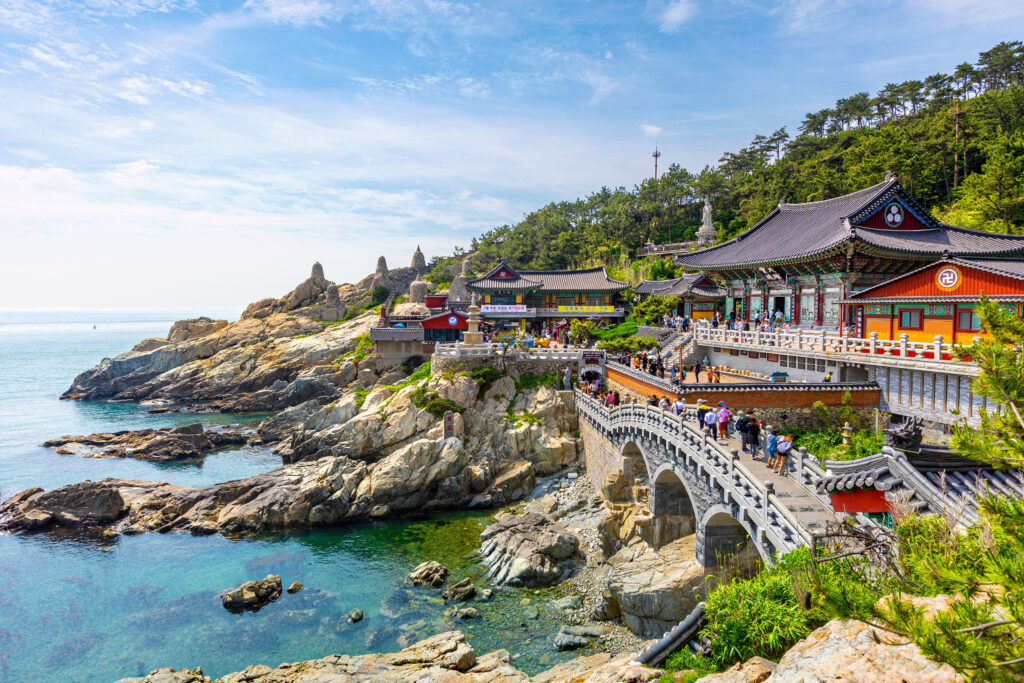
Busan, South Korea's second-largest city after the capital, is nestled in the heart of mountains that once offered natural protection from Japanese pirates. Korea's largest port is distinguished by its magnificent setting, dotted with rugged parks and popular beaches, making it a particularly pleasant destination. Busan is more than just a maritime replica of Seoul: it has its own charm, is more cosmopolitan than the capital and has a southern friendliness all of its own. The markets, especially the famous Jagalchi fish market, are very lively. Click here to book your guided day tour of the city.
3. The DMZ, the Demilitarized Zone
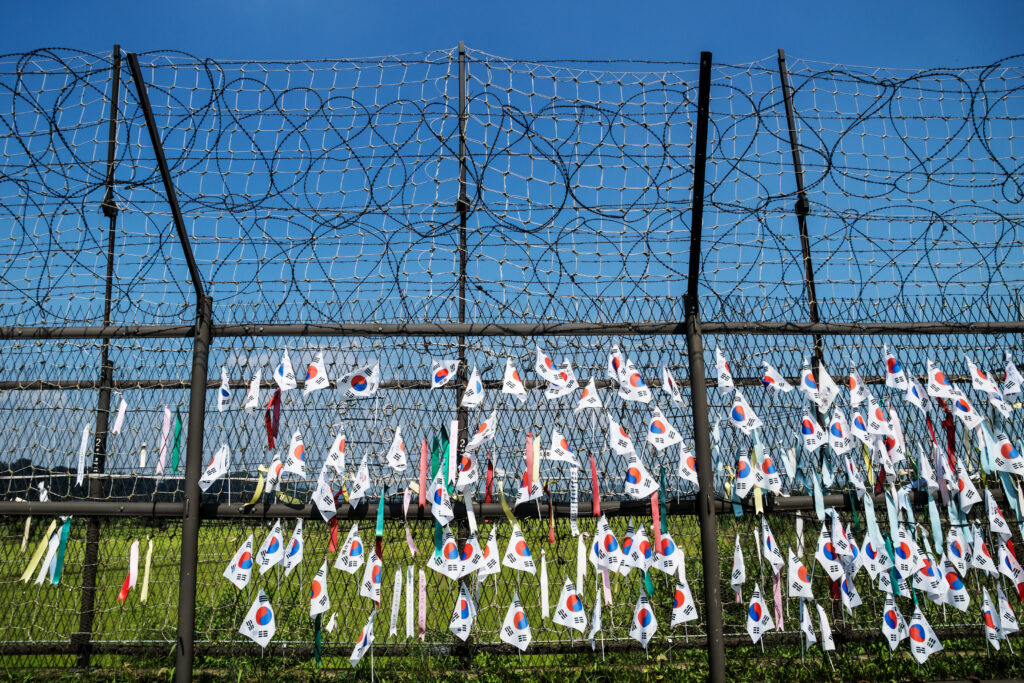
The DMZ was created at Panmunjeon when the armistice between the two Koreas was signed on July 27, 1953. It is a strip of land measuring 4 km by 250 km that separates North and South Korea, and is demilitarized in name only. The number of soldiers guarding the border is estimated at over 1,200,000: 700,000 North Koreans and 400,000 South Koreans and Americans. And that's not counting the million mines buried there. Only one crossing is officially open: the continuously guarded Joint Security Area, the only place that tourists can visit. The itinerary is always the same: after visiting the Peace Museum, we go to a large stele promoting peace, bearing Kim Jong-un's signature. Then we climb to the first floor of a large, modern Soviet-style "Freedom House". From the balcony, you can see the real border. Here, photos are permitted and even encouraged. The guards are even willing to take selfies with tourists! Click here to book your visit to Korea's demilitarized zone from Seoul.
4. What to do in South Korea Discover the city of Jeonju
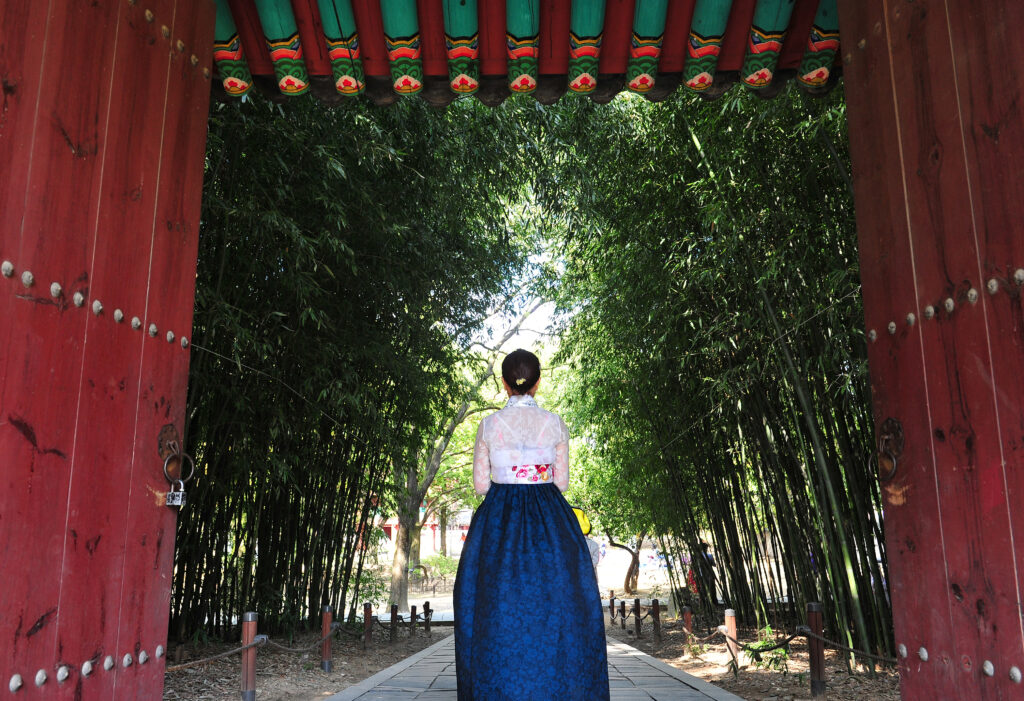
Jeonju, capital of Jeollabukdo province, is a city with a rich history and many treasures, and the cultural heart of South Korea. Its traditional Hanok village is particularly remarkable, offering unique charm and authenticity. Jeonju is also renowned for its workshops producing hanji, Korean paper, whose quality is renowned as far away as China. Another cultural aspect contributing to the city's renown is its festival dedicated to pansori, a form of traditional Korean music listed as a UNESCO cultural heritage site. Last but not least, Jeonju is famous for its gastronomy, with visitors delighting in bibimbap and kongnamulgukbap, two local culinary gems. In short, an authentic immersion in Korean culture! Click here to book your day trip from Seoul to Jeonju's Hanok village !
5. Hahoe
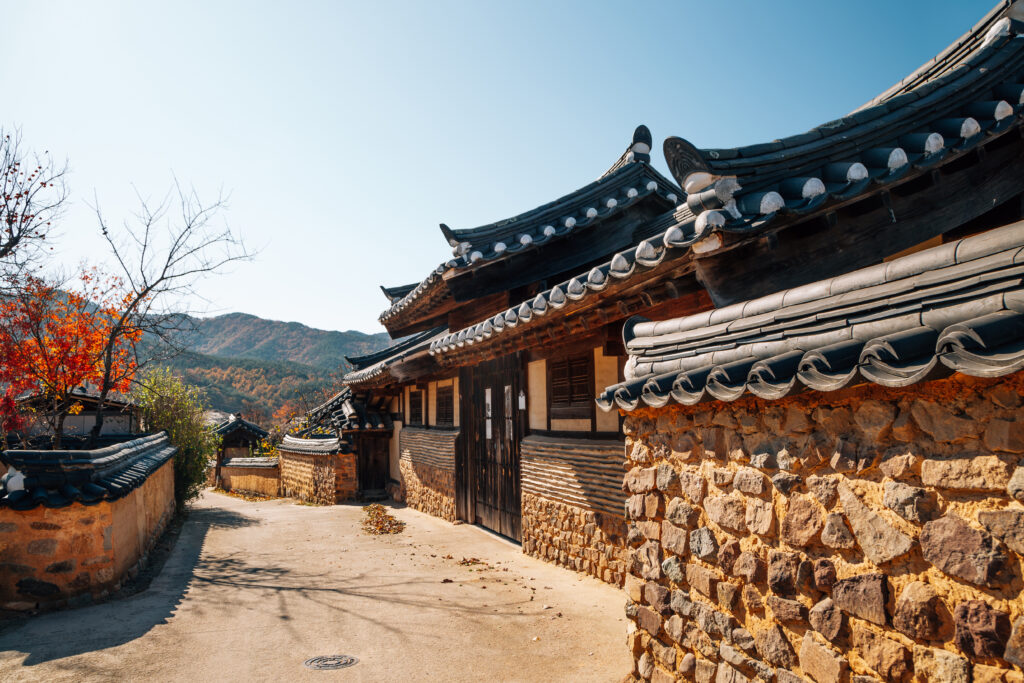
The village of Hahoe, one of our Korean destinations between autumn and winter, epitomizes local traditions and remains one of the best preserved in South Korea. Nestled in the heart of a superb natural environment, between forested mountains, the Nakdong River and agricultural fields, it reflects the principles of Confucian culture, where landscapes nourish both body and mind. Unlike a man-made village, this is a dynamic place where agricultural activities are still very much alive. This offers visitors a somewhat timeless experience. Among the buildings to visit: Chyunhyodang, the residence of Ryu Seongnyeong; Yangjindang, the most imposing and ancient house of the Ryu clan; and Bukchon, a perfect representation of the aristocratic noble residences of the Joseon era, dating from 1892. Lose yourself in the charming alleyways lined with thatched cob houses and immerse yourself in this rural village.
6. What to do in South Korea Go back in time in Gyeongju
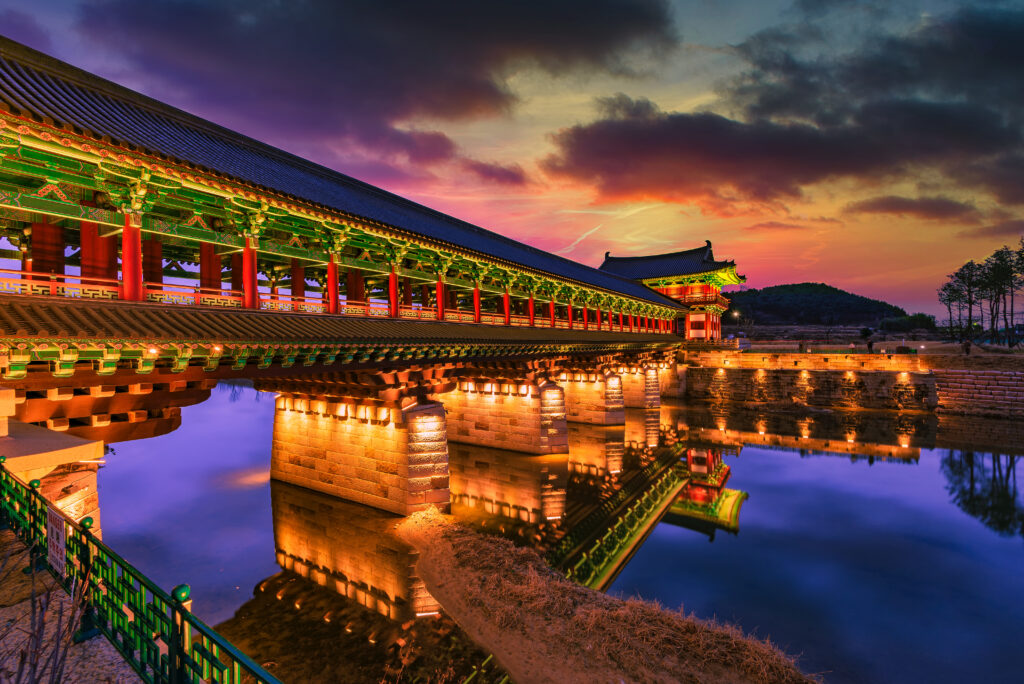
Gyeongju epitomizes South Korea's historic city par excellence. Former capital of the Silla kingdom, which reigned from 52 BC to 935, it boasts an unrivalled cultural heritage. Aptly nicknamed the "museum without walls", Gyeongju is packed with remarkable historical sites, each more impressive than the last. Must-sees include the Bulguksa temple and Seokguram cave, Buddhist treasures of incomparable splendor. What also sets Gyeongju apart from other Korean cities is its architecture. Under the regime of dictator Park Chunghee, it was made compulsory for all buildings to respect the traditional architectural style, giving the city a unique charm. Book your guided tour of Gyeongju, capital of the Three Kingdoms, here .
7. Bulguksa Temple
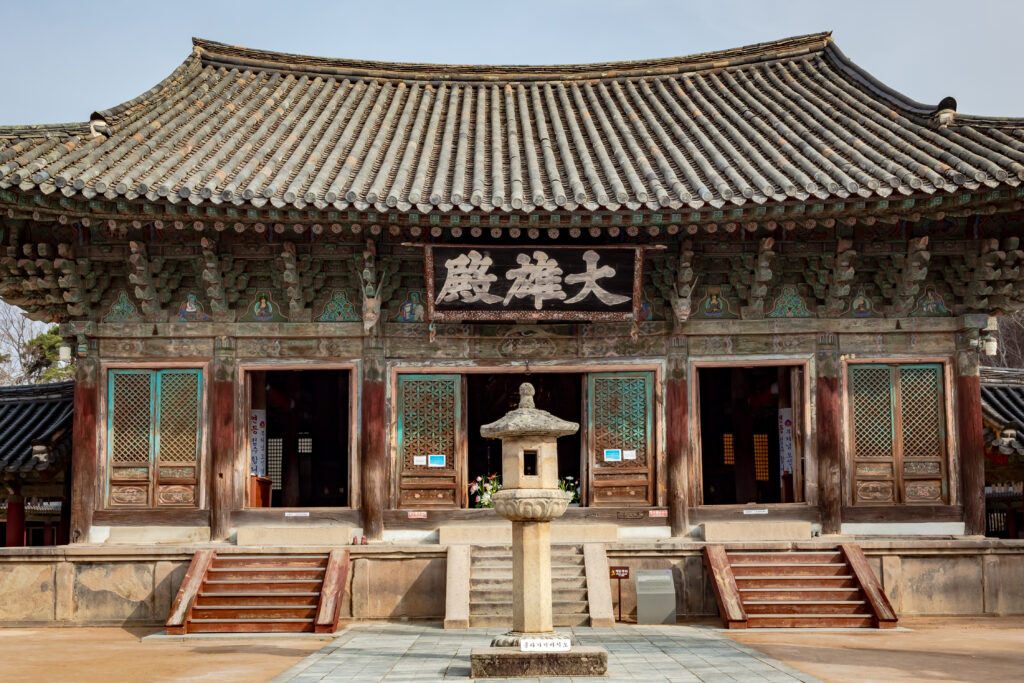
A visit to Bulguksa Temple, a remarkable testimony to Buddhist culture during the Silla period, is a must. Founded in 528 by King Beop-heung and enlarged under Kyeongdeok in 751, the temple once comprised some 80 buildings. Sadly, it was destroyed during the Japanese invasions of 1592, then gradually rebuilt, but damaged again during the Korean War. Extensive restoration work was completed in 1973, leaving only the 8 buildings that stand today, making it one of the country's most famous temples and home to several national treasures. It is advisable to visit early in the morning or on weekdays to avoid the crowds of visitors. At the entrance, after passing through Cheon-wangmun (Heavenly Guardians), you are greeted by the temple's trademark Silla-era stone staircases.
8. Haeinsa temple
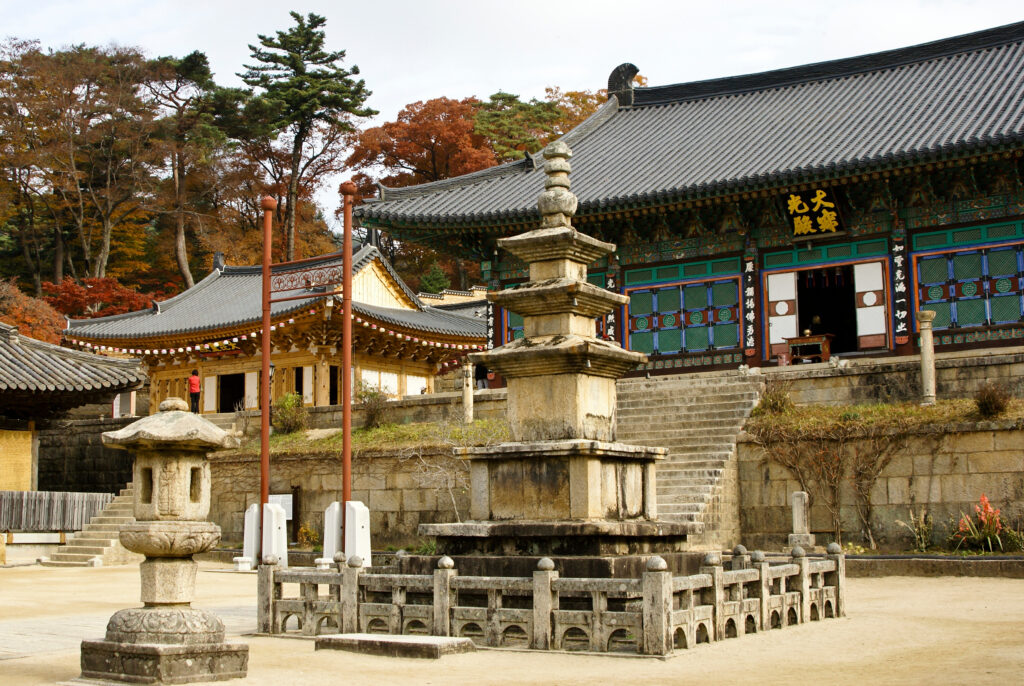
One of the principal temples of the Jogye order and one of the three largest in the country, along with Tongdosa and Sanggwonsa, Haeinsa Temple enjoys a high reputation. Its history dates back to 802, when the monks Suneung and Iljung began its construction. Boasting a rich cultural and historical heritage, with numerous national treasures and halls of striking beauty, Haeinsa Temple is nestled in the heart of Gayasan National Park, offering a setting of nature and serenity. What makes this temple so famous is the fact that it houses the Triptaka Koreana, a collection of Buddhist texts comprising 80,000 engraved wooden plates. Dating from the end of the Goryeo dynasty between 1237 and 1248, these boards represent an impressive feat of technique and resilience. Classified as a national treasure and UNESCO World Heritage Site, the Triptaka Koreana is housed in two buildings, the Janggyeong Panjeon, on the temple grounds. For conservation reasons, it is unfortunately not possible to get too close. Haeinsa Temple is also home to several hermitages (13 in all), scattered in the mountains along streams, offering picturesque scenery and a mystical atmosphere during evening prayers.
9. What to do in South Korea Fresh air in Seoraksan National Park
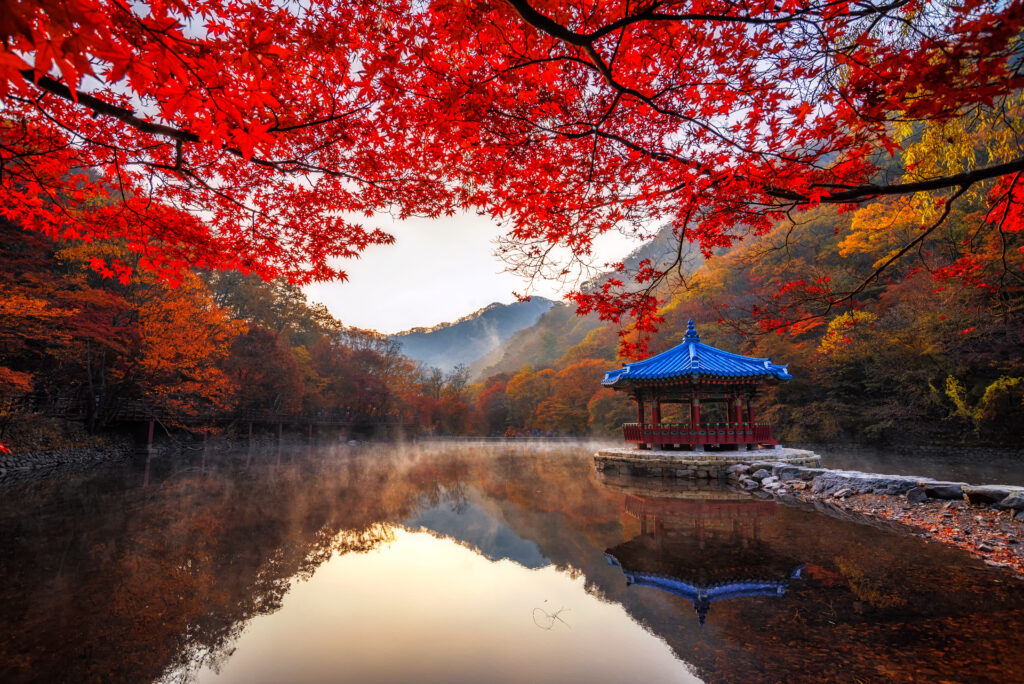
Seoraksan National Park, one of our top reasons for vacationing in Korea in 2024, is without doubt Korea's most magnificent national park, offering a spectacle that changes with the seasons. Its deep valleys, overhung by granite peaks and pine forests, forma veritable postcard of breathtaking scenery. The park is divided into three distinct parts: the Inner Seorak (Naeseorak) to the west, the Southern Seorak (Namseorak), and the Outer Seorak (Oeseorak) to the east, near the sea. There are four main gateways to this natural paradise: Seorak-dong (also known as Seogongwon) in the outer Seorak to the northeast; Baekdam (via the village of Yongdaeri) to the northwest; Jangsudae to the southwest, located in the inner Seorak; and Osaek, in the inner Seorak to the southeast.
10. Jeju
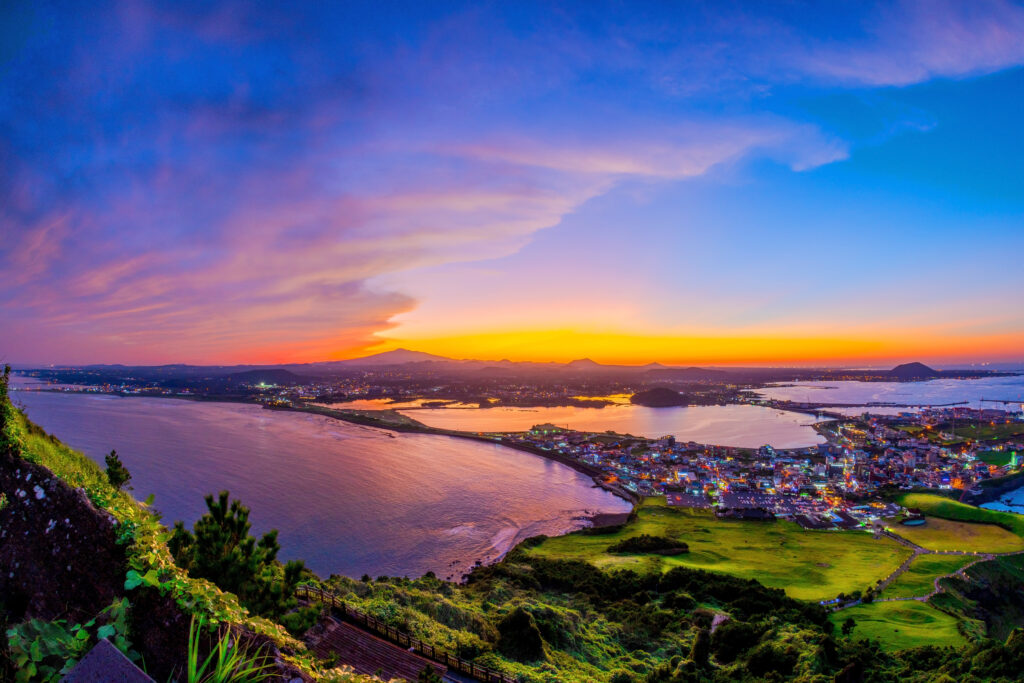
Jeju, Korea's largest and southernmost island, is a volcanic island with an almost subtropical oceanic climate, characterized by warm, sunny summers and mild winters. Although Mount Hallasan (1,950 m), the country's highest mountain, can sometimes be covered in snow. The island attracts many South Koreans, especially honeymooners, who flock here in droves. However, Jeju offers much more than just its prized beaches. Beyond the wind-eroded areas are magnificent tree forests and vast fields of mandarin trees, the island's specialty.
Enjoya day trip to eastern Jeju (including entrance fees to Seongsan Ilchulbong and Bijarim, including the Manjanggul Cave, a must-see in Jeju) by booking right here!
11. Suncheon
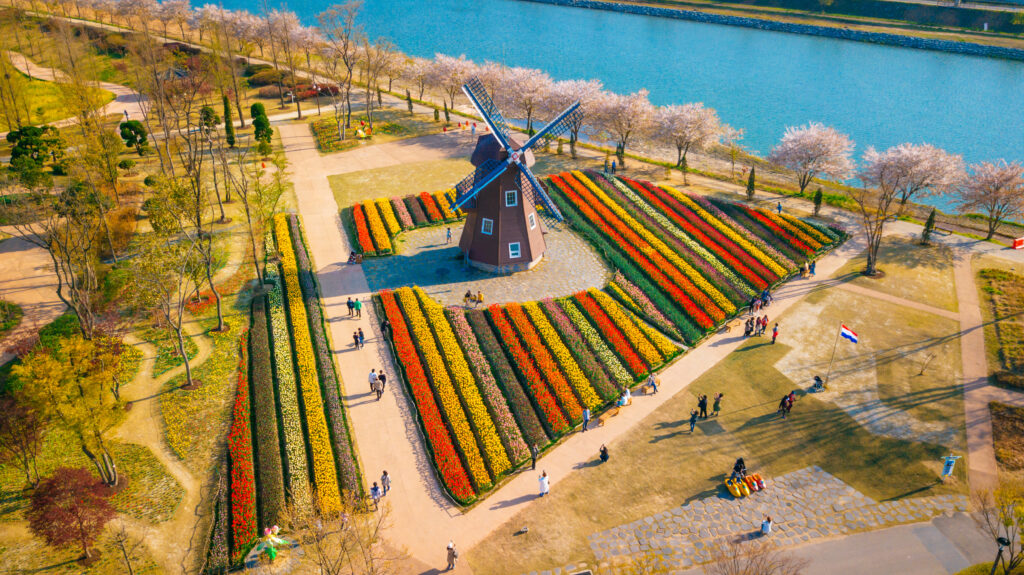
Suncheon is a jewel where Korean nature is revealed in all its splendor, far from the hustle and bustle of the big cities and frankly imbued with mystery. Renowned for its eco-friendliness, Suncheon offers an enchanting natural setting, with a bay and garden of incomparable beauty that have made it famous. Nestled about an hour's drive from Gwangju, this destination is the perfect day getaway, offering a breath of fresh air that is often life-saving. Suncheon is definitely one of our favorite Korean cities!
12. Bukhansan National Park
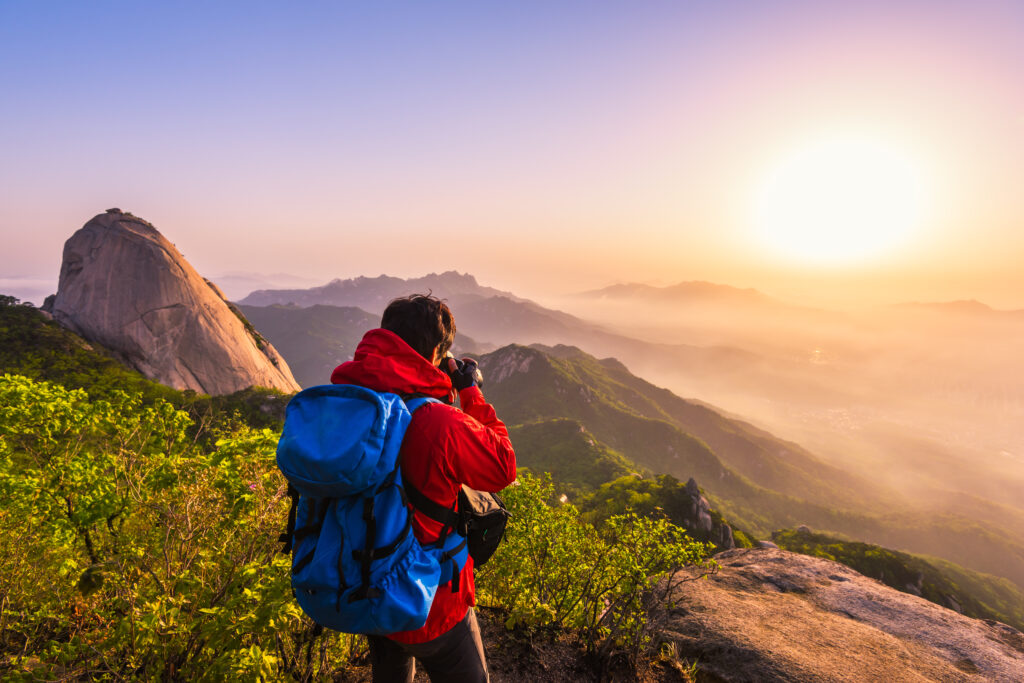
Bukhansan National Park lies to the north of Seoul, partly in the city itself and partly in Gyeonggi-do province. It would be difficult to list all the hiking opportunities available in this superb granite massif, elegantly shaped by the passage of time. Although weekends attract crowds of Seoulites in search of fresh air and greenery, it's still an ideal destination for a getaway if you're looking to escape for a while. In addition to hiking trails and rock-climbing areas, there are several interesting sites worth a visit, including Bukhansanseong Fortress and various temples housing magnificent rock-carved Buddha statues. The Bukhansanseong fortress dates back to the Three Kingdoms, but the structures visible today date from 1711, when King Sukjong undertook its construction to provide a refuge for the court in case of danger.
13. What to do in South Korea Taste Korean cuisine
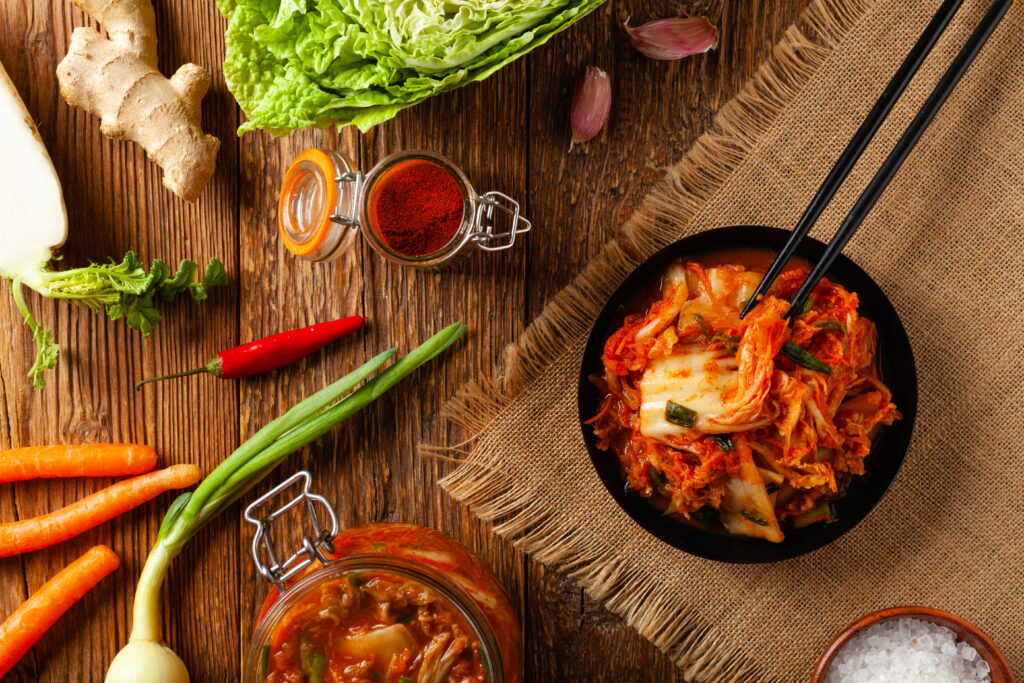
Less widely publicized than the cuisines of its Chinese and Japanese neighbors, Korean cuisine has been the subject of a recent and passionate infatuation on the part of gourmets in France. And with good reason: the peninsula's gastronomy offers exquisite flavors and is considered one of the healthiest in the world. Balanced and low in fat, one of our 10 vegetarian destinations focuses on an abundance of vegetables, including lacto-fermented vegetables such as the famous kimchi, hailed by nutritionists for its health benefits and revered by Koreans. Rice, noodles, tofu, vegetables, meat, fish and seafood are generously seasoned with chilli, soy sauce and garlic, ingredients that are omnipresent in local cuisine. And let's not forget the famous Korean barbecue, where diners grill their own meat while sipping soju, a rice alcohol that has become the country's national drink. Bon appétit!
How to visit South Korea in 10 days?
Day 1: Seoul and its imperial palaces
Day 2: Seoul and its folk village
Day 3: Seoul and its hanoks.
Day 4: Shopping day in Seoul.
Day 5: Hiking in Bukhansan National Park.
Day 6: Historical and cultural escapade in Andong.
Day 7 and 8 : Visit Gyeongju, Korea's historic capital.
Day 9 : Go to Haiensa for a spiritual getaway.
Day 10: Return to Seoul.
How to visit South Korea in 15 days?
If you're staying an extra five days, you can add two days to the previous itinerary in Busan to enjoy its market and monastery, one or two days in Seoraksan Nature Park, one of the most beautiful in the country, and a day in Sokcho to enjoy the beach.
Interested in a vacation in South Korea? Take advantage of a discount by booking your travel insurance here, and leave with peace of mind!


